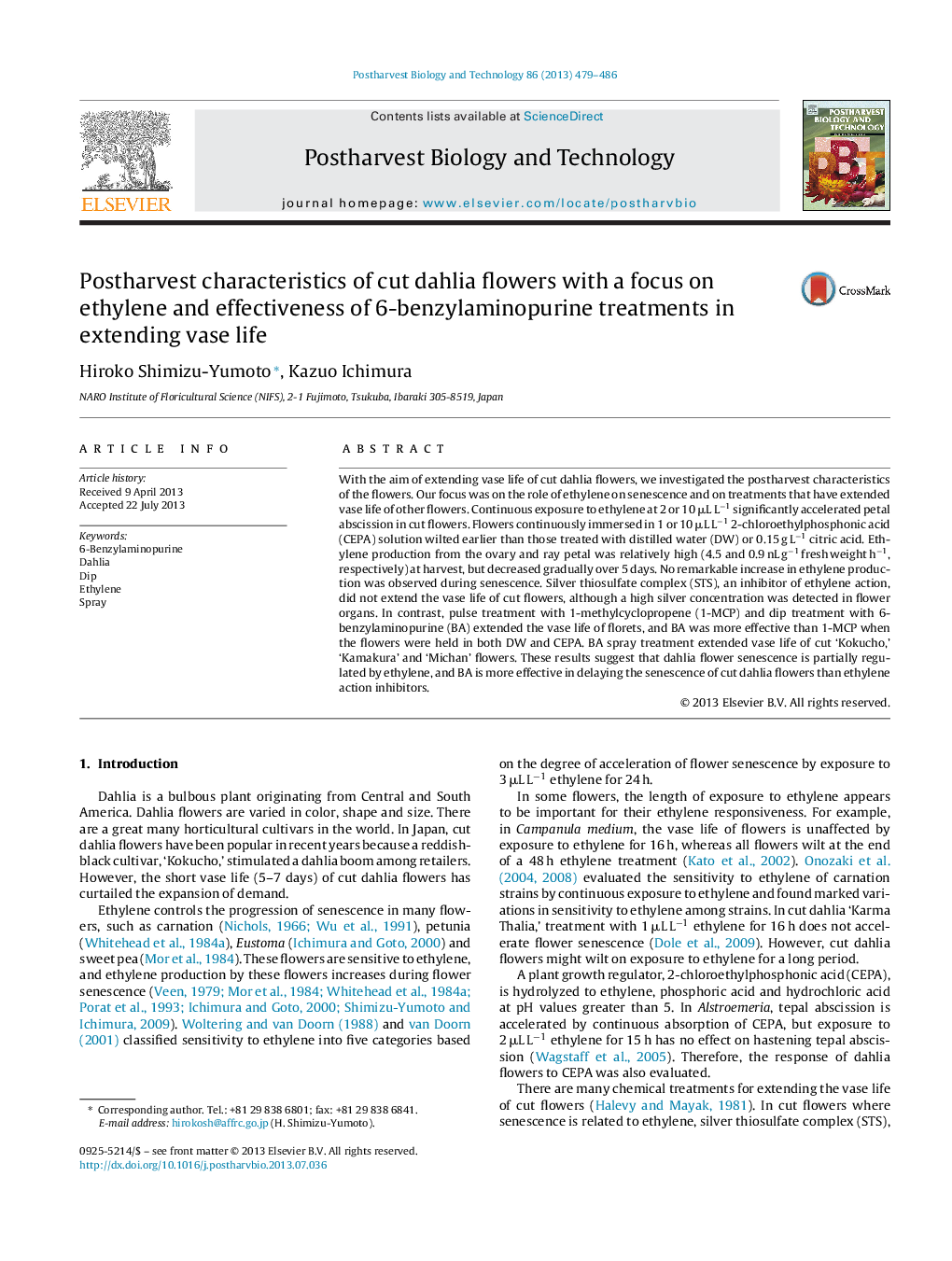| Article ID | Journal | Published Year | Pages | File Type |
|---|---|---|---|---|
| 6378823 | Postharvest Biology and Technology | 2013 | 8 Pages |
Abstract
With the aim of extending vase life of cut dahlia flowers, we investigated the postharvest characteristics of the flowers. Our focus was on the role of ethylene on senescence and on treatments that have extended vase life of other flowers. Continuous exposure to ethylene at 2 or 10 μL Lâ1 significantly accelerated petal abscission in cut flowers. Flowers continuously immersed in 1 or 10 μL Lâ1 2-chloroethylphosphonic acid (CEPA) solution wilted earlier than those treated with distilled water (DW) or 0.15 g Lâ1 citric acid. Ethylene production from the ovary and ray petal was relatively high (4.5 and 0.9 nL gâ1 fresh weight hâ1, respectively) at harvest, but decreased gradually over 5 days. No remarkable increase in ethylene production was observed during senescence. Silver thiosulfate complex (STS), an inhibitor of ethylene action, did not extend the vase life of cut flowers, although a high silver concentration was detected in flower organs. In contrast, pulse treatment with 1-methylcyclopropene (1-MCP) and dip treatment with 6-benzylaminopurine (BA) extended the vase life of florets, and BA was more effective than 1-MCP when the flowers were held in both DW and CEPA. BA spray treatment extended vase life of cut 'Kokucho,' 'Kamakura' and 'Michan' flowers. These results suggest that dahlia flower senescence is partially regulated by ethylene, and BA is more effective in delaying the senescence of cut dahlia flowers than ethylene action inhibitors.
Keywords
Related Topics
Life Sciences
Agricultural and Biological Sciences
Agronomy and Crop Science
Authors
Hiroko Shimizu-Yumoto, Kazuo Ichimura,
